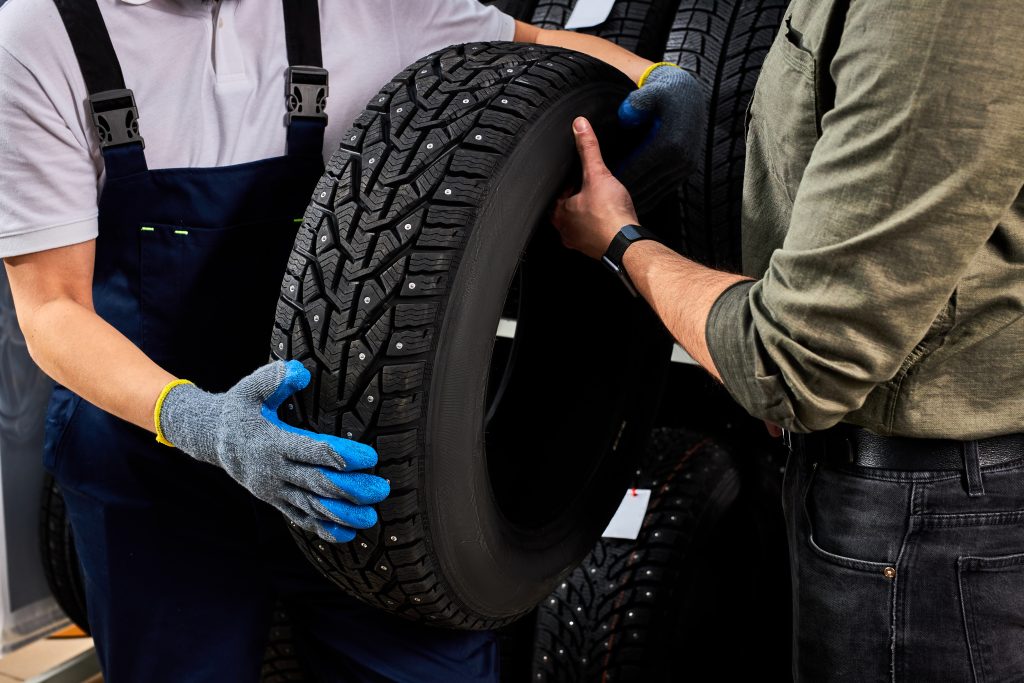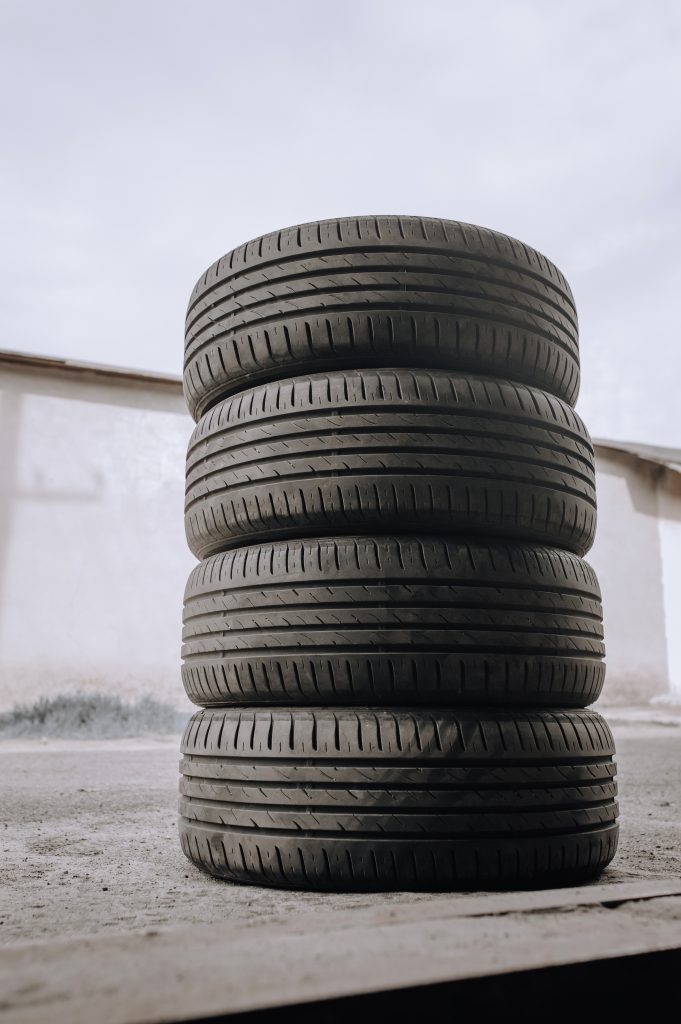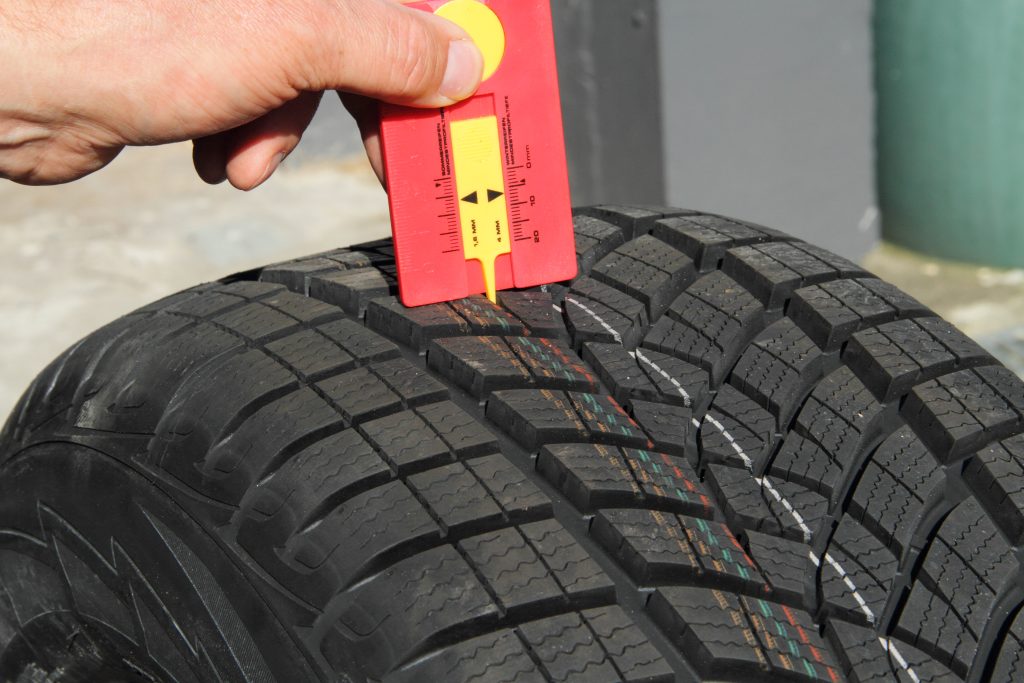A place for everything, and everything in its place.
A Totally-Not-Boring Blog About Storage
How to Store Tires Between Seasons
Table of Contents
- Clean tires before storage
- Better to keep your tires indoors or outdoors?
- Keep tires out of the sun
- Bag them up
- The best position for tire storage
- Should I remove my tires from the vehicle for storage?
- How to store tires mounted on rims/wheels
- How to store unmounted tires
- Should You Store Tires Inflated or Deflated?
- Professionally inspect the tires before remounting them on a vehicle
- Storing tires at Storwell

As the seasons change, you may need to think about changing your seasonal tires. Whether you’re switching to winter tires or to summer tires, it’s important to think about how you store your off-season set. Setting aside a set of tires for long term storage may seem like a simple task: remove the tires from your vehicle and place them somewhere out of the way. However, there are a few things to consider when storing your tires until it’s time to put them back on your vehicle. If you live in the GTA and are looking for a place to store your tires with Storwell. Storwell has self-storage facilities in Mississauga, Scarborough, and Etobicoke with state of the art security features to make sure your tires are well protected.
Everything from the location they’re stored, to the way they are cleaned and even what they’re sitting next to all comes into play. You may have them changed by a professional or do it in your garage at home. But what do you do after they have been taken off? Knowing how to store tires after removing them from your vehicle is essential. If you don’t handle and store your tires properly, their characteristics can change. This can shorten their life. They can even deteriorate so badly in storage that they need to be replaced. But if you handle and store them correctly, they will deliver years of service – and you’ll save money.

Clean tires before storage
If you have an extra set of tires for your car, you’ll inevitably need to store them somewhere. However, improperly stored tires are at an increased risk of dry rotting. This happens when the rubber and other materials in the tire degrade and become hard and brittle, making them unsafe. Make sure they’re clean. Dirty tires are more prone to dry rotting. Clean tires before storing them using some detergent, water and a tire brush. This will help remove a season’s worth of road grime. Clean your wheels, too, if you store your tires on them. Give your tires enough time to dry completely before putting them in storage.
Better to keep your tires indoors or outdoors?
Keep your tires indoors if it’s at all possible. Your tires will only wear down faster being exposed to hot or cold weather from being outside. At the very minimum, you should always have your tires in a space that’s covered and out of the elements as much as possible. The best location to store your tires indoors is a space that’s cool, dry, and away from your furnace, central vacuum, or sump pump. It is not recommended to store tires in an attic as heat rises and can affect the quality of your tires over time. Your basement is a better choice if it’s possible to do so. Keeping your tires inside can also prevent them from getting damaged from environmental humidity and moisture fluctuations.
Keep tires out of the sun
Some argue that UV rays are the biggest factor in tire aging. Direct sunlight can heat the rubber and cause premature deterioration. The UV rays penetrate the rubber; dry it out, and eventually break down the rubber compounds. Your tire storage location should keep them out of direct sunlight. Store them at a constant temperature. Excessive heat, extreme cold and constant temperature swings can accelerate dry rotting. Therefore, it’s best to keep your tires indoors in a cool, dry space like a self-storage unit.
Bag them up
Find a large, airtight plastic bag to fit each tire. Try yard bags or leaf bags. Ensure the bag is free of moisture, then remove as much air as possible from the bag (you can use your vacuum cleaner for this) and tape it shut. This airtight environment will reduce evaporation of oils from the rubber compounds. Specific tire storage caddies or tire totes are also available. These make transporting and storing tires easier and help keep them grime and dust free. However, they aren’t air tight. If you want to use them, bag tires as above first, then place them in your tire tote.
While some things in storage require airflow, tires do better when you seal them in plastic. The airtight space prevents oxygen from breaking down the rubber. Make sure to pack your tires properly. The best way to store unmounted tires is to stand them up sidewall to sidewall. Remember to rotate the tire’s position every month to prevent deformities. It’s also good to keep the tires off the ground, either on a pallet or shelf, to help with temperature control.
The best position for tire storage

You have three options for how to store your tires: stand them upright, stack them on their sides, or hang them up on hooks or racks. The best option is standing, as it puts less stress on the tires. If you must stack, try not to stack too high. You want to avoid it tipping and damaging the tires. If your tires are mounted on rims stacking is actually preferable in this case. Another great option for tires on rims is hanging them from tire racks or hooks. Never hang unmounted tires as this can distort and damage them.
Before removing your tires, note their position on your car. This will allow you to properly rotate your tires next time you mount them to ensure that they wear evenly. Inspect each one for damage or uneven wear. Clean your wheels and tires with water and dry them well to limit any corrosion. Remove any stones or debris that have been trapped in the tire grooves. If you are storing outdoors (recommended for a short time only), raise tires off the ground and use waterproof covering with holes to prevent moisture build-up.
For aesthetic reasons, if your tires have whitewall or raised white lettering, store them with the whitewall or raised white lettering facing each other. Otherwise, black rubber could stain them. If tires are on a vehicle parked for a long period, the weight of the vehicle needs to be taken off the tires by jacking it up or removing the tires. Failure to do this may cause irreversible damage. Be sure the surfaces on which tires are stored are clean and free from grease, gasoline, solvents, oils or other substances that could deteriorate the rubber.
Should I remove my tires from the vehicle for storage?
If possible, it’s recommended to remove your tires from the vehicle for proper long-term tire storage. Tire removal allows you to isolate the conditions your tires are stored in, while removing stresses on the tire such as vehicle weight, temperature fluctuations, etc. Another benefit of removing your tires for storage is that when it’s time for the tires to be installed on the vehicle again, the tires may be rotated from their previous positions. To do this easily, make a note of the placement of the tires on your vehicle at the time of removal, and then they may be rotated accordingly when reinstalling them.
How to store tires mounted on rims/wheels
The most ideal way of storing mounted tires is via hooks through the rim itself. This keeps the weight off the tire and reduces the risk of the tire resting on a single flex point during its time being stored off the vehicle. It’s important that this method is only used if the hook is mounted through the rim itself. Hanging tires from hooks not mounted on a rim may cause deformation of the tire due to irregular weight applied on the hook. Alternatively, you can store mounted tires in a stack, vertically, with the sidewall facing down so that the weight of the rim isn’t pushing down on the tread of the tire during storage.
How to store unmounted tires
Store unmounted tires stacked sidewall to sidewall; to prevent staining of white sidewall tires, store white sidewall to white sidewall or place individually in bags. It’s also best to place the tires on top of a piece of wood or other barrier rather than directly on the ground or concrete. This will help protect against excessive moisture gathering on the tires. Alternatively, you can use one of the many commercially available tire racks which are garage/wall mounted. These serve to help keep the weight of the tire off the ground and keep the tires up and out of the way during long term storage.
Should You Store Tires Inflated or Deflated?
Generally, it’s okay to store your tires when they’re still inflated. You never need to deflate them fully for long-term storage. To prep your tires for storage make sure to clean and dry them thoroughly before putting them away. Avoid using any cleaning products with petroleum in them as they can be corrosive to your tires.

Professionally inspect the tires before remounting them on a vehicle
Tires can last for several years in storage if they are stored in the right conditions. However, many tire experts recommend replacing tires six years after their production date regardless of the tread. Old tires can be compromised in other ways when the rubber compound breaks down. To give you another perspective, it’s like the difference between a brand new rubber band and one that’s been sitting in your desk for years. When you take your tires out of storage, make sure you look for signs of wear and check the age of the tire. If you are unfamiliar with what dry rot or crazing looks like, have a tire professional give your tires a once over.
Storing tires at Storwell
If you want your tires to stay in excellent condition while in storage, it’s best to visit your unit every so often and make sure there are no problems and to also rotate them to avoid flat spots. The earlier you discover an issue, the earlier you’ll be able to take action to prevent additional problems from occurring. You also need to choose a storage facility that will protect your tires in the best way possible. Storwell Self Storage is a great choice for tire storage; our individually alarmed units are power ventilated controlling for moisture and temperature damage. Storwell’s facilities have 24-hour video surveillance and on-site management that ensures whatever you store in your unit is safe and secure at all times. Storwell also has 24-hour access so you can get your tires whenever is most convenient for you.



